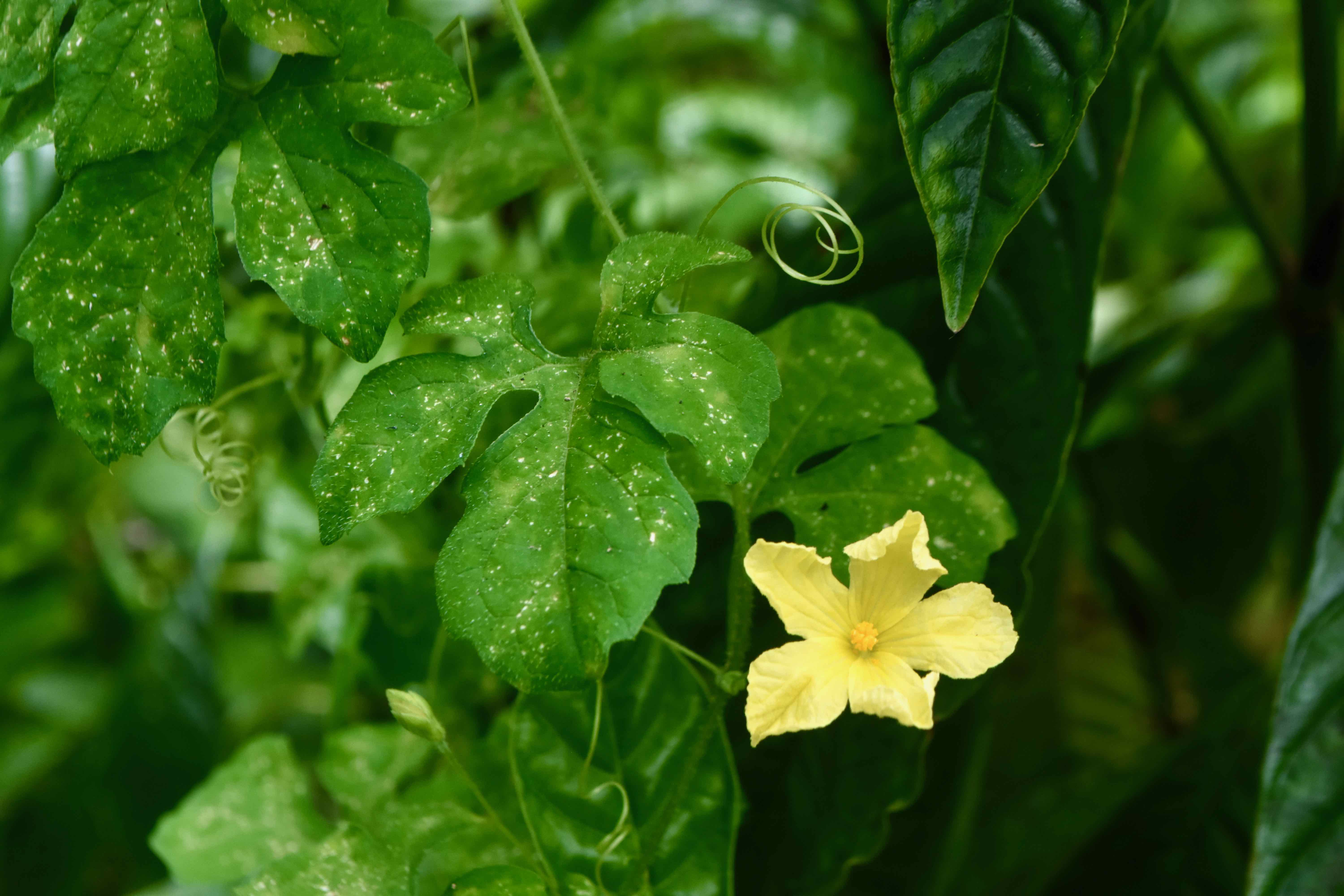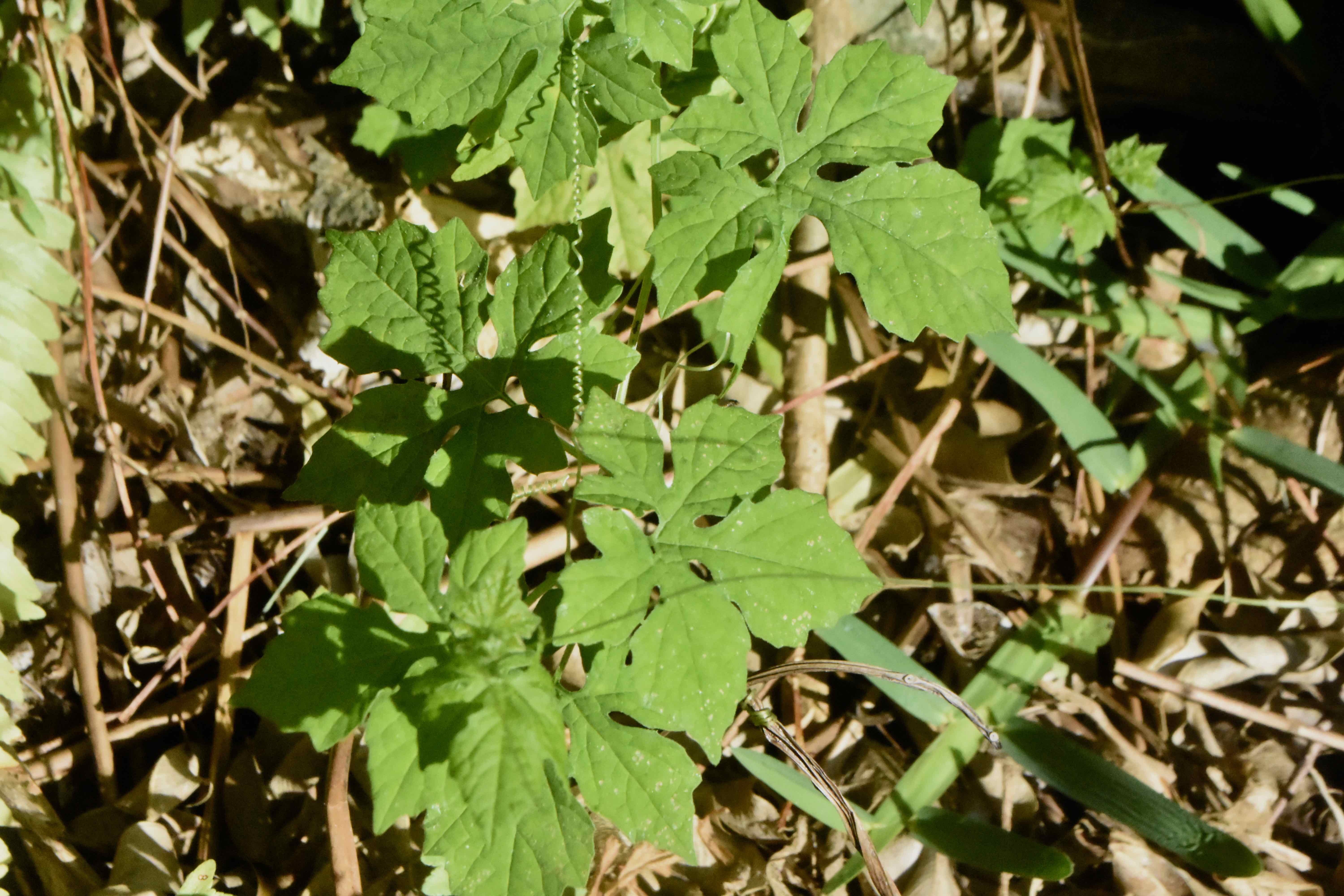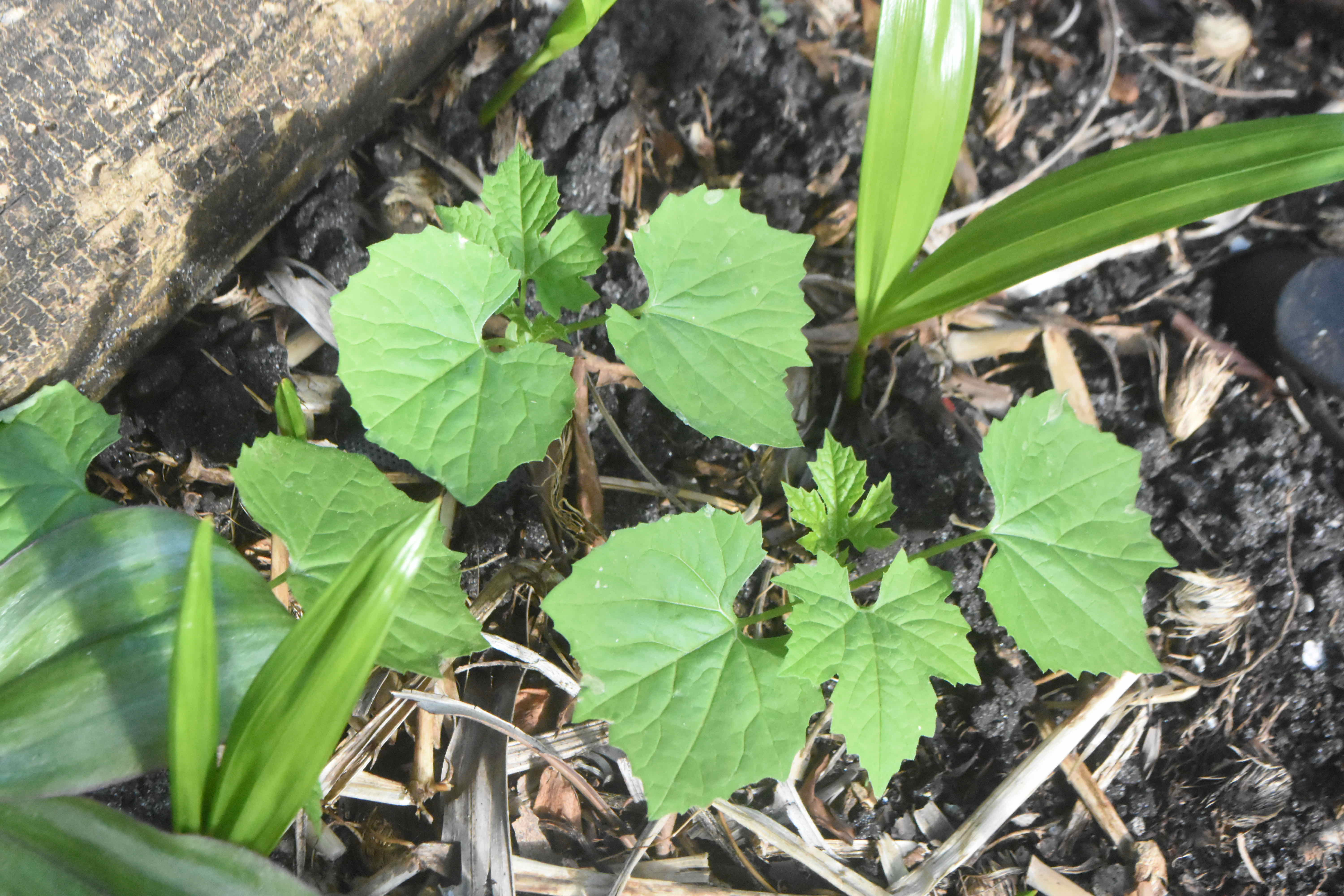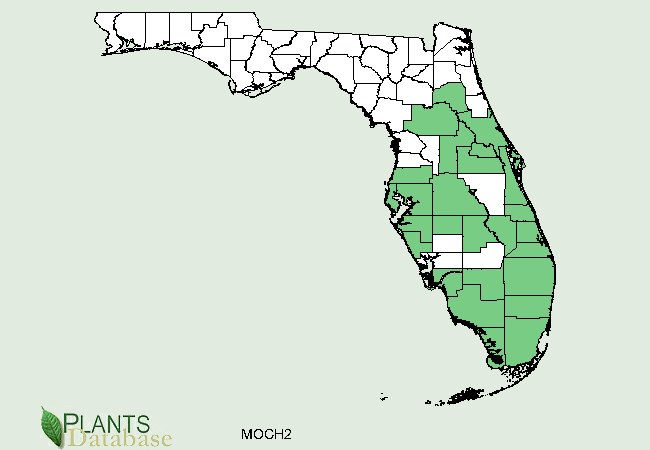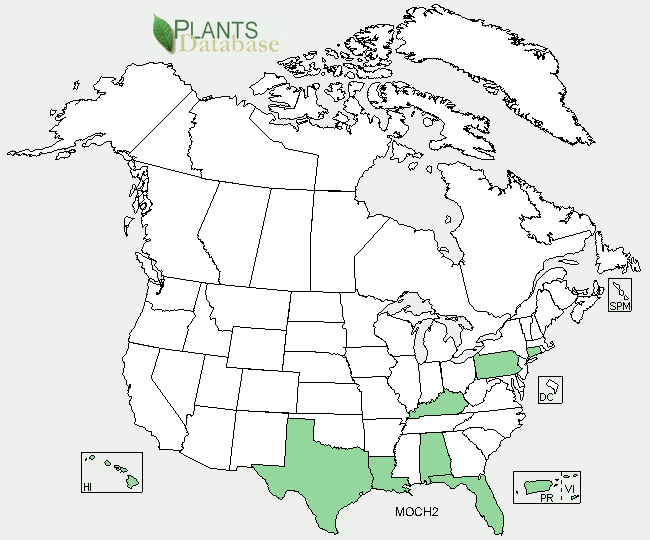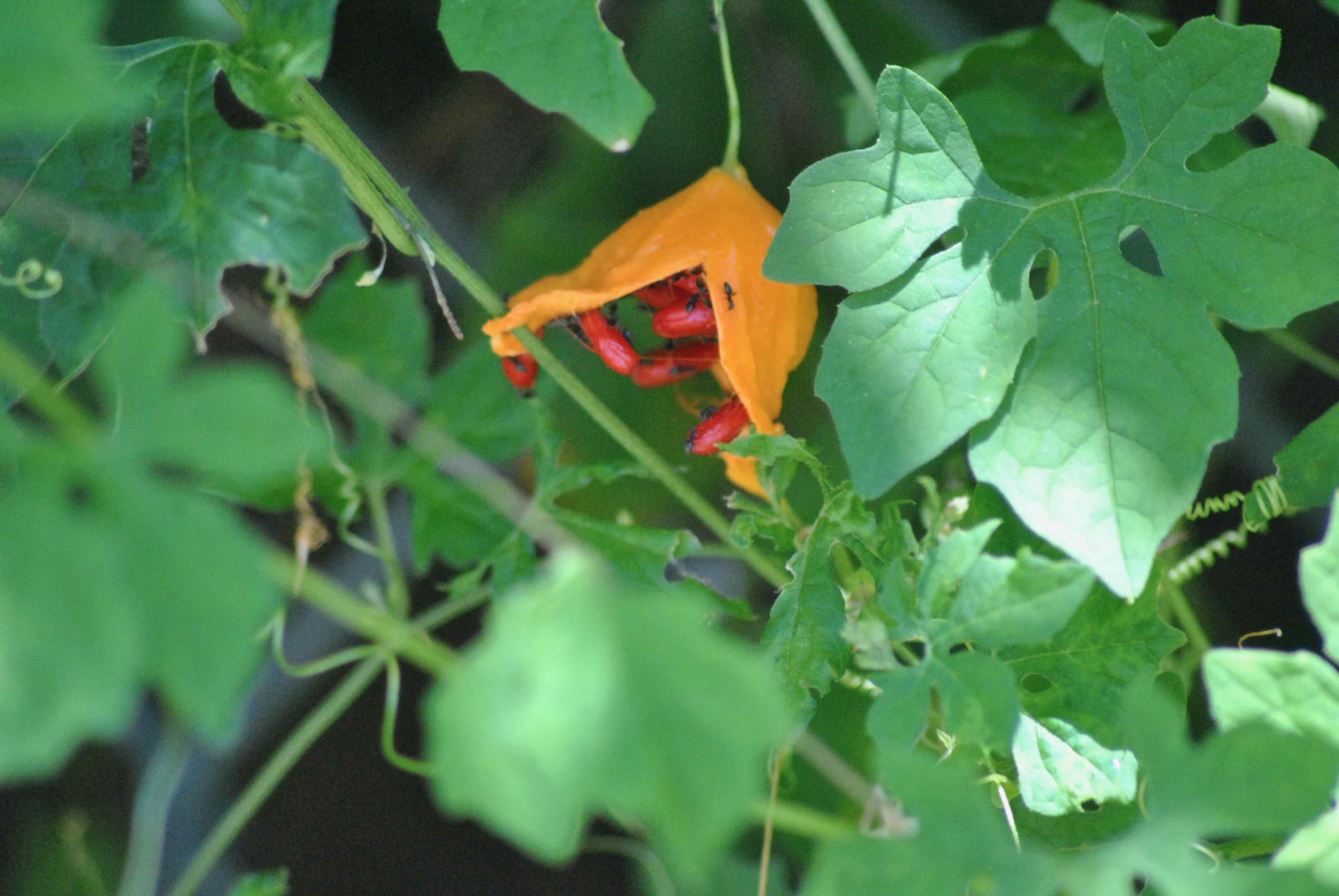
Bitter melon, photographed at western Delray Beach, Palm Beach County, in August 2013.
Bitter melon, Momordica charantia, could cure you or kill you. It's that kind of plant.
It's a native of Africa and southeast Asia, presumably — its origins are unknown — grown in places as a vegetable and widely used for its medicinal properties. It's shown promise in treating some leukemias and diabetes. But it's also poisonous if you eat it when it's ripe or if you eat the wrong part at the wrong time.
The Florida Exotic Plant Pest Council lists bitter melon as a Class II invasive, meaning it's spreading in the wild but has yet to displace native plants. And it's a major agricultural problem, particularly for citrus growers.
It is a vine, an annual plant, closely related to cucumbers, squashes and watermelon. It attaches itself to whatever is available, a fence, a post, another plant, via tendrils, those coil-like appendages seen in the lower right of the picture above. If "whatever" happens to be another plant, bitter melon can overgrow it, block out sunlight and compete with it for nutrients and water. If the "whatever" happens to be a crop of some sort, it can also make harvesting difficult.
The leaves are deeply lobed on mature plants, like watermelon leaves, coming to five points. The stems are thin, but thicken at the base and become somewhat woody as they age. We've seen vines 10 feet long or more.
Bitter melon is found in most Peninsula counties from Putnam south to Monroe and in every South Florida county. It's also found in Alabama, Louisiana, Texas, Kentucky, Pennsylvania and Connecticut. Again, it's believed to be native to Africa and southeast Asia but has spread to tropical and subtropical places around the globe. It's considered an invasive in much of the Pacific and the Americas — North, Central and South. It's believed that it got to the Americas via the slave trade.
Like cukes and other related plants, bitter melon has both male and female flowers on the same plant, with only the females producing fruit. Immature fruit is green, turning orange with a gourd-like appearance (one of its common names is leprosy gourd). The fruit eventually opens up revealing dark red seeds that hang like teeth in a hockey player's mouth.
When green, the fruit is edible when cooked. It's high in potassium and vitamins C and K, but has a bitterness that is off the scale for most palates. It also has an odor that Eat the Weeds likens to an old gym shoe. Actually, we prefer the old gym shoe. Yet bitter melon is regularly eaten in Asian cuisine.
There are cultivated varieties of bitter melon with fruit that resembles a deeply wrinkled cucumber and without the gym shoe aroma. On the other hand, once the fruit turns orange, it's mostly toxic and shouldn't be eaten. The exception is the outer coating of the seeds, though the seeds themselves are poisonous.
At the same time, bitter melon is full of powerful chemicals that have the potential to combat some deadly diseases, including sundry leukemias and other cancers, AIDS and diabetes. Some scientific studies have found that bitter melon's component chemicals might have potential against some cancers, but nothing definitive. Against diabetes, it works in the same way as insulin but correct dosages to treat diabetics have not been determined.
Other common names: balsam apple, balsam pear, wild cucumber, bitter apple, bitter gourd and bitter cucumber. It is a member of Cucurbitaceae, the cucumber family.
Click on photo for larger image
U.S. Department of Agriculture Distribution Maps


